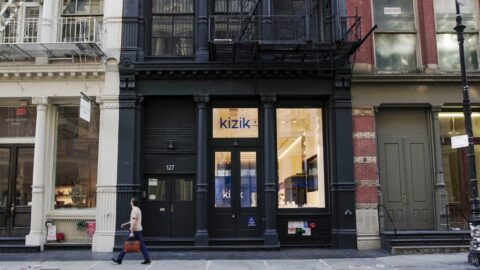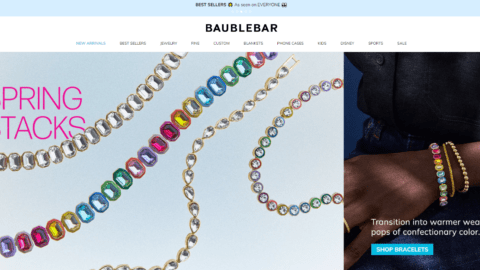When it comes to content, retailers are recognizing that they need to do more than just describe the products they sell. They need to educate, inspire and differentiate with their content. Savvy shoppers are looking for trusted sources of information to help them make informed purchase decisions.
Quality content can help drive sales for all types of retailers, but it is especially crucial for high-end items such as engagement rings that have a longer buying cycle. “Content plays an important role for us in driving traffic, increasing conversion rates and ultimately driving more revenue,” said Ashley Collins, E-commerce Navigation Manager for Helzberg Diamonds.
Bridal purchases are typically extensively researched, so content can help position the retailer as a trusted source, Collins explained. “We have educational videos explaining the different types of diamond cuts, colors and quality. If we can educate the consumer throughout the process, we are offering a competitive advantage.”
Advertisement
Earlier this year the retailer launched 360-degree videos to provide an enhanced view of the bridal selections, Collins noted. “Visitors love to see the product spinning and sparkling. It has been a success in the bridal area and we are looking to launch it in other categories going forward.”
Since 35% to 45% of the retailer’s customers are shopping via tablet or mobile, Collins said it is important to ensure that content is optimized for all types of devices.
Helzberg considers a number of factors when developing its content strategy across all categories, according to Collins. “We look at where a product category is and how we can move the needle. We look at trends and customer ratings and reviews and what customers are telling us that they want to see.”
Using Personalization To Tell The Story
Personalized content is an integral part of the overall strategy at lingerie eTailer Adore Me. Social media plays a key role in driving content, according to Morgan Hermand-Waiche, Founder and CEO of Adore Me. “Facebook is our leading channel with more than 250,000 likes, and it is where we host giveaways and share product images, inspirational quotes and relevant fashion content. Instagram and Twitter are also growing quickly, and we’re launching our blog this month, featuring great editorial content, blogger partnerships, and useful tutorials, videos, and content pieces.”
The eTailer also invests heavily in photography, partnering with celebrity photographers such as Tony Duran and Antoine Verglas, so as to ensure beautiful product imagery that converts well, Hermand-Waiche explained.
User-generated content is a popular strategy for many retailers, including Duane Reade. The retailer’s recent “Show Us Some Leg” campaign used social sharing, user-generated content and an in-house blogging team create buzz about the pharmacy chain’s new brand of hosiery. The initiative included social photo contests, video blog posts, Twitter “parties” and other activities across Facebook, Foursquare and Pinterest.
Duane Reade also generates revenue through the blogging team, which offers vendor partners with “exceptional options and opportunities to generate buzz for their brands and products sold in our stores,” according to Calvin Peters, Online/Public Relations Manager of Duane Reade.
Robust Increase In Retailer-Generated Content
“Retailers are finally getting it,” said Ken Burke, CEO of MarketLive. “While just 20% to 30% of retailers were focusing on content a few years ago, now more than 50% of the retailers we work with are embracing the concept and using content as a competitive differentiator. Amazon is never going to create this kind of product content because they sell so many products and they only have one way to present the product page.”
Retailers are beginning to recognize that they have to stay somewhat agnostic with their content to gain customer trust, Burke noted. “The challenge is creating content to sell but also as a way of informing and educating.”
While most retailers are not specifically focusing on the ROI of content at this point, Burke said that will change as more retailers look closely at the connection between content and sales. Some content — such as how-to guides, blog postings and articles — is designed to drive traffic that may eventually end up as revenue, but it is difficult to measure the direct impact, he explained. “As an example, putting up a Pinterest board won’t typically affect conversion directly, but will drive brand awareness and eventually visits that likely convert better than your site average. “
Robust content can also impact SEO and return visits, Burke noted. “We’ve seen merchants with strong content offerings driving return visits as high as 60% or more of their total site traffic.”
Burke pointed to sites such as Intermix, which marries fashion trends to content, and the “inspiration” category on Cost Plus World Market, which provides articles related to the product categories being featured. “When you do a search on the Cost Plus web site, for example, you get results for products and content.”
Content Keeps Users From Straying
For retailers that do not have the resources to develop their own content, some are seeing success with incorporating content from outside blogs, journals, online videos and other sources.
“What happens often is that people will Google when they are doing research, and that takes them away from the retailer’s web site,” said Marcel Munoz, CTO of Thanx Media, vendor of the Blosm data collection platform. “What our platform does is bring those searches into the product pages, so that the visitor stays put.”
This strategy has proven successful for Goedeker’s, a discount home goods and appliance web site and Thanx Media user.
“One thing we’ve found is that the company with the best data typically wins,” said Jeff Minor,
Chief Information and Technical Officer for Goedeker’s.
Minor explained that the company is working to develop its own content, such as buying guides for specific appliance categories, but it uses Blosm to find product descriptions on manufacturers’ web sites, for example. “We have 100,000 SKUs, which makes it very challenging to write a product description for every product we sell.”








